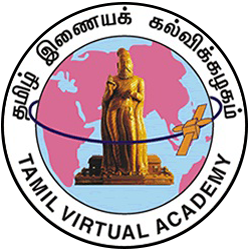Primary tabs
C02116 : மெய்ம் மயக்கம்
In this lesson the occurrence of two consonants (மெய் எழுத்துகள்) together in the middle of the word is described. There are two kinds of this consonant cluster in Tamil language. Two different consonants may occur together in the manner of jamming and the same consonants may also jarn.In the first kind the letters ங்,ஞ்,ட்,ண்,ந்,ம்,ய்,ர்.ல்,வ்,ழ்,ள்,ற் and ன் are involved. That is all the soft and medial with two hard consonants (ட் and ற்) jam in the first type.
In the second kind the same consonants may jam. The six hard consonants, the six soft consonants and four medial consonants ய்,ல்,வ் and ள் (except ர் and ழ்) perform this jamming.
It is possible that after a consonant another consonant occurs alone. This is different because in the other two cases the consonant would be a part of vowel-consonant combine (உயிர் மெய் எழுத்து). ய்,ர்,ழ் are involved in this cluster.
All these types of jamming are noticeable in both poetic and oral expressions. But there are a few consanants which can occur only in poems. It is in fact a sort of consonantal reduction called மகரக் குறுக்கம். The consonant ம் occurs after ன் and ண் at the end of words and before வ் in expressions like தரும்வங்கம் and வரும்வளவன்.
Thus this lesson enables the learner to study and practise a sort of consonantal reduction in clusters forming words or groups of words like noun phrases.
முன்


